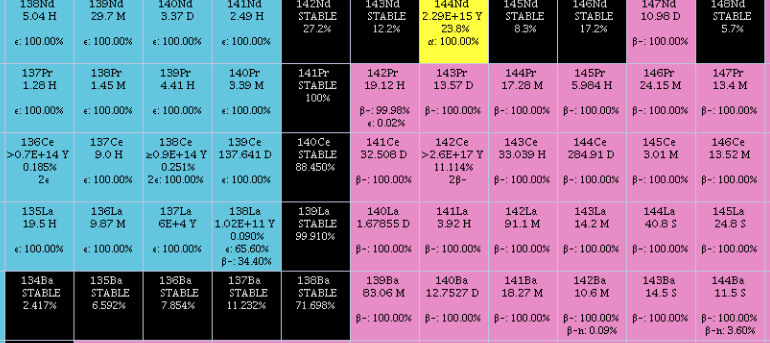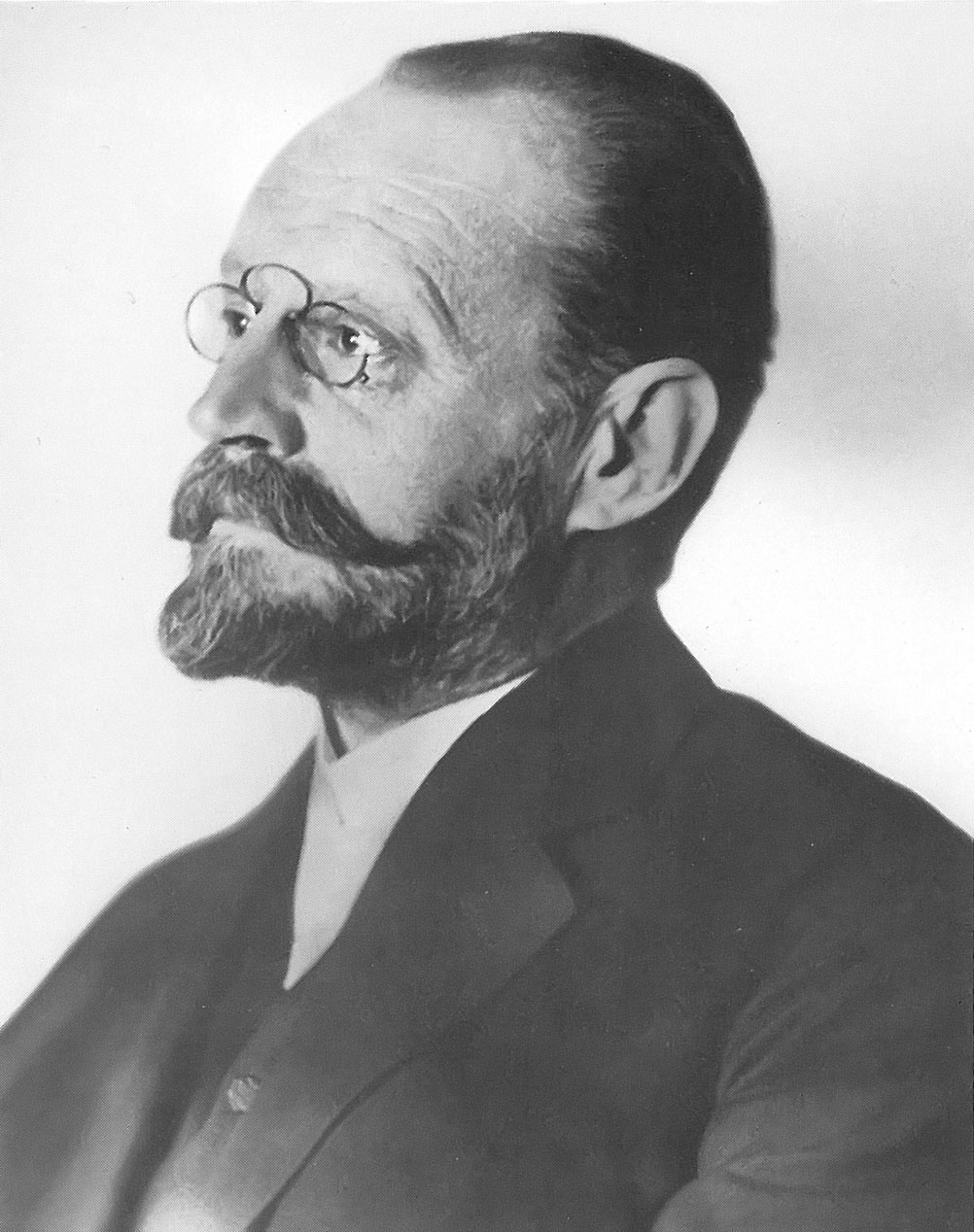|
Monazite
Monazite is a primarily reddish-brown phosphate mineral that contains rare-earth elements. Due to variability in composition, monazite is considered a group of minerals. The most common species of the group is monazite-(Ce), that is, the cerium-dominant member of the group. It occurs usually in small isolated crystals. It has a hardness of 5.0 to 5.5 on the Mohs scale of mineral hardness and is relatively dense, about 4.6 to 5.7 g/cm3. There are five different most common species of monazite, depending on the relative amounts of the rare earth elements in the mineral: * monazite-(Ce), (the most common member), * monazite-(La), , * monazite-(Nd), , * monazite-(Sm), , * monazite-(Pr), . The elements in parentheses are listed in the order of their relative proportion within the mineral: lanthanum is the most common rare-earth element in monazite-(La), and so forth. Silica () is present in trace amounts, as well as small amounts of uranium and thorium. Due to the alpha decay o ... [...More Info...] [...Related Items...] OR: [Wikipedia] [Google] [Baidu] [Amazon] |
Monazite-(Ce)
Monazite-(Ce) (CePO4) is the most common representative of the monazite group. It is the cerium-dominant analogue of monazite-(La), monazite-(Nd), and monazite-(Sm). It is also the phosphorus analogue of gasparite-(Ce). The group contains simple rare earth phosphate minerals with the general formula of AXO4, where A = Ce, La, Nd, or Sm (or, rarely, Bi), and X = P or, rarely, As. The A site may also bear Ca and Th.Mindat, Monazite Group, https://www.mindat.org/min-29313.html References {{reflist Cerium minerals Phosphate minerals Monoclinic minerals Minerals in space group 14 ... [...More Info...] [...Related Items...] OR: [Wikipedia] [Google] [Baidu] [Amazon] |
Monazite-(Nd)
Monazite-(Nd) is a relatively rare representative of the monazite group, with neodymium being the dominant rare earth element The rare-earth elements (REE), also called the rare-earth metals or rare earths, and sometimes the lanthanides or lanthanoids (although scandium and yttrium, which do not belong to this series, are usually included as rare earths), are a set o ... in its structure. This variety of monazite is typically colored bright rose-red. It is the neodymium analogue of monazite-(Ce), monazite-(La), and monazite-(Sm). The group contains simple rare earth phosphate minerals with the general formula of A''T''O4, where A = Ce, La, Nd, or Sm (or, rarely, Bi), and B = P or, rarely, As. The A site may also bear Ca and Th.Mindat, Monazite Group, https://www.mindat.org/min-29313.html References {{reflist Neodymium compounds Phosphate minerals Monoclinic minerals Minerals in space group 14 ... [...More Info...] [...Related Items...] OR: [Wikipedia] [Google] [Baidu] [Amazon] |
Monazite-(La)
Monazite-(La) is a relatively rare representative of the monazite group, with lanthanum being the dominant rare earth element in its structure. As such, it is the lanthanum analogue of monazite-(Ce), monazite-(Nd) Monazite-(Nd) is a relatively rare representative of the monazite group, with neodymium being the dominant rare earth element The rare-earth elements (REE), also called the rare-earth metals or rare earths, and sometimes the lanthanides or la ..., and monazite-(Sm). It is also the phosphorus analogue of gasparite-(La). The group contains simple rare earth phosphate minerals with the general formula of A''T''O4, where A = Ce, La, Nd, or Sm (or, rarely, Bi), and B = P or, rarely, As. The A site may also bear Ca and Th.Mindat, Monazite Group, https://www.mindat.org/min-29313.html References {{reflist Lanthanum minerals Phosphate minerals Monoclinic minerals Minerals in space group 14 ... [...More Info...] [...Related Items...] OR: [Wikipedia] [Google] [Baidu] [Amazon] |
Monazite-(Sm)
Monazite-(Sm) is an exceedingly rare representative of the monazite group, with samarium being the dominant rare earth element in its structure. It is the samarium analogue of monazite-(Ce), monazite-(La), and monazite-(Nd) Monazite-(Nd) is a relatively rare representative of the monazite group, with neodymium being the dominant rare earth element The rare-earth elements (REE), also called the rare-earth metals or rare earths, and sometimes the lanthanides or la .... It is only the second known mineral with samarium being the mineral-forming element, after florencite-(Sm). The group contains simple rare earth phosphate minerals with the general formula of A''T''O4, where A = Ce, La, Nd, or Sm (or, rarely, Bi), and B = P or, rarely, As. The A site may also bear Ca and Th.Mindat, Monazite Group, https://www.mindat.org/min-29313.html References {{reflist Samarium minerals Phosphate minerals Monoclinic minerals Minerals in space group 11 Minerals described in 2002 ... [...More Info...] [...Related Items...] OR: [Wikipedia] [Google] [Baidu] [Amazon] |
Lanthanum
Lanthanum is a chemical element; it has symbol La and atomic number 57. It is a soft, ductile, silvery-white metal that tarnishes slowly when exposed to air. It is the eponym of the lanthanide series, a group of 15 similar elements between lanthanum and lutetium in the periodic table, of which lanthanum is the first and the prototype. Lanthanum is traditionally counted among the rare earth elements. Like most other rare earth elements, its usual oxidation state is +3, although some compounds are known with an oxidation state of +2. Lanthanum has no biological role in humans but is used by some bacteria. It is not particularly toxic to humans but does show some antimicrobial activity. Lanthanum usually occurs together with cerium and the other rare earth elements. Lanthanum was first found by the Swedish chemist Carl Gustaf Mosander in 1839 as an impurity in cerium nitrate – hence the name ''lanthanum'', from the ancient Greek (), meaning 'to lie hidden'. Although ... [...More Info...] [...Related Items...] OR: [Wikipedia] [Google] [Baidu] [Amazon] |
Phosphate Mineral
Phosphate minerals are minerals that contain the tetrahedrally coordinated phosphate () anion, sometimes with arsenate () and vanadate () substitutions, along with chloride (Cl−), fluoride (F−), and hydroxide (OH−) anions, that also fit into the crystal structure. The phosphate class of minerals is a large and diverse group, however, only a few species are relatively common. Applications Phosphate rock has high concentration of phosphate minerals, most commonly from the apatite group of minerals. It is the major resource mined to produce phosphate fertilizers for the agricultural industry. Phosphate is also used in animal feed supplements, food preservatives, anti-corrosion agents, cosmetics, fungicides, ceramics, water treatment and metallurgy. The production of fertilizer is the largest source responsible for minerals mined for their phosphate content. Phosphate minerals are often used to control rust, and to prevent corrosion on ferrous materials applied with ele ... [...More Info...] [...Related Items...] OR: [Wikipedia] [Google] [Baidu] [Amazon] |
Cerium
Cerium is a chemical element; it has Chemical symbol, symbol Ce and atomic number 58. It is a hardness, soft, ductile, and silvery-white metal that tarnishes when exposed to air. Cerium is the second element in the lanthanide series, and while it often shows the oxidation state of +3 characteristic of the series, it also has a stable +4 state that does not oxidize water. It is considered one of the rare-earth elements. Cerium has no known biological role in humans but is not particularly toxic, except with intense or continued exposure. Despite always occurring in combination with the other rare-earth elements in minerals such as those of the monazite and bastnäsite groups, cerium is easy to extract from its ores, as it can be distinguished among the lanthanides by its unique ability to be oxidized to the +4 state in aqueous solution. It is the most common of the lanthanides, followed by neodymium, lanthanum, and praseodymium. Its estimated abundance of elements in Earth's crust, ... [...More Info...] [...Related Items...] OR: [Wikipedia] [Google] [Baidu] [Amazon] |
Thorium
Thorium is a chemical element; it has symbol Th and atomic number 90. Thorium is a weakly radioactive light silver metal which tarnishes olive grey when it is exposed to air, forming thorium dioxide; it is moderately soft, malleable, and has a high melting point. Thorium is an electropositive actinide whose chemistry is dominated by the +4 oxidation state; it is quite reactive and can ignite in air when finely divided. All known thorium isotopes are unstable. The most stable isotope, 232Th, has a half-life of 14.05 billion years, or about the age of the universe; it decays very slowly via alpha decay, starting a decay chain named the thorium series that ends at stable 208 Pb. On Earth, thorium and uranium are the only elements with no stable or nearly-stable isotopes that still occur naturally in large quantities as primordial elements. Thorium is estimated to be over three times as abundant as uranium in the Earth's crust, and is chiefly refined from monazite sa ... [...More Info...] [...Related Items...] OR: [Wikipedia] [Google] [Baidu] [Amazon] |
Helium
Helium (from ) is a chemical element; it has chemical symbol, symbol He and atomic number 2. It is a colorless, odorless, non-toxic, inert gas, inert, monatomic gas and the first in the noble gas group in the periodic table. Its boiling point is the lowest among all the Chemical element, elements, and it does not have a melting point at standard pressures. It is the second-lightest and second-most Abundance of the chemical elements, abundant element in the observable universe, after hydrogen. It is present at about 24% of the total elemental mass, which is more than 12 times the mass of all the heavier elements combined. Its abundance is similar to this in both the Sun and Jupiter, because of the very high nuclear binding energy (per nucleon) of helium-4 with respect to the next three elements after helium. This helium-4 binding energy also accounts for why it is a product of both nuclear fusion and radioactive decay. The most common isotope of helium in the universe is helium-4, ... [...More Info...] [...Related Items...] OR: [Wikipedia] [Google] [Baidu] [Amazon] |
Samarium
Samarium is a chemical element; it has symbol Sm and atomic number 62. It is a moderately hard silvery metal that slowly oxidizes in air. Being a typical member of the lanthanide series, samarium usually has the oxidation state +3. Compounds of samarium(II) are also known, most notably the monoxide SmO, monochalcogenides SmS, SmSe and SmTe, as well as samarium(II) iodide. Discovered in 1879 by French chemist Paul-Émile Lecoq de Boisbaudran, samarium was named after the mineral samarskite from which it was isolated. The mineral itself was named after a Russian mine official, Colonel Vassili Samarsky-Bykhovets, who thus became the first person to have a chemical element named after him, though the name was indirect. Samarium occurs in concentration up to 2.8% in several minerals including cerite, gadolinite, samarskite, monazite and bastnäsite, the last two being the most common commercial sources of the element. These minerals are mostly found in China, the United State ... [...More Info...] [...Related Items...] OR: [Wikipedia] [Google] [Baidu] [Amazon] |
Praseodymium
Praseodymium is a chemical element; it has symbol Pr and atomic number 59. It is the third member of the lanthanide series and is considered one of the rare-earth metals. It is a soft, silvery, malleable and ductile metal, valued for its magnetic, electrical, chemical, and optical properties. It is too reactive to be found in native form, and pure praseodymium metal slowly develops a green oxide coating when exposed to air. Praseodymium always occurs naturally together with the other rare-earth metals. It is the sixth-most abundant rare-earth element and fourth-most abundant lanthanide, making up 9.1 parts per million of the Earth's crust, an abundance similar to that of boron. In 1841, Swedish chemist Carl Gustav Mosander extracted a rare-earth oxide residue he called didymium from a residue he called "lanthana", in turn separated from cerium salts. In 1885, the Austrian chemist Carl Auer von Welsbach separated didymium into two elements that gave salts of different colours, ... [...More Info...] [...Related Items...] OR: [Wikipedia] [Google] [Baidu] [Amazon] |






